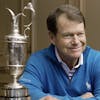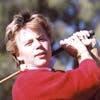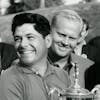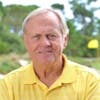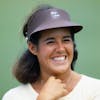Pat Bradley - Part 4 (The Solheim Cup and the HOF)
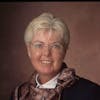
Join us for the captivating conclusion of our four-part interview with World Golf Hall of Fame member Pat Bradley on "FORE the Good of the Game." In this episode, we delve deep into Pat's illustrious career, exploring her journey beyond the pinnacle of success to her profound impact on women's golf.
Pat Bradley reflects on the evolution of her career, particularly the transition period as a new generation of golfers emerged. She shares heartfelt insights into the challenges of keeping pace with younger players like Annika Sorenstam and Se Ri Pak, and the realization that her unparalleled achievements, including six major championships, had set a high bar for the future.
We also take a stroll down memory lane, revisiting Pat's remarkable achievements in major championships. With a staggering 85% cut-making rate in majors, her record speaks volumes of her consistency and prowess. Pat discusses her unique perspective on close calls and the intensity of competing against other Hall of Famers, offering an insider's view of the competitive spirit that defined her era.
The episode also shines a light on Pat's involvement in the Solheim Cup, both as a player and captain. Her anecdotes from the inaugural Solheim Cup provide a rare glimpse into the event's early days and its evolution into a premier tournament in women's golf.
Moreover, Pat opens up about the significance of the U.S. Women's Senior Open and her role in advocating for its inception. Her passion for the game and dedication to its growth are evident as she recounts these pivotal moments in golf history.
Finally, Pat answers three thought-provoking questions, revealing her reflections on her career choices, a candid ‘mulligan’ moment, and how she wishes to be remembered in the annals of golf history.
Tune in for this inspiring episode as we celebrate the legacy of a true golfing legend, Pat Bradley, "FORE the Good of the Game."
Follow our show and/or leave a review/rating on:
Our Website https://www.forethegoodofthegame.com/reviews/new/
Apple Podcasts https://podcasts.apple.com/us/podcast/fore-the-good-of-the-game/id1562581853
Spotify Podcasts https://open.spotify.com/show/0XSuVGjwQg6bm78COkIhZO?si=b4c9d47ea8b24b2d
Google Podcasts https://podcasts.google.com/feed/aHR0cHM6Ly9mZWVkcy5idXp6c3Byb3V0LmNvbS8xNzM3Mjc1LnJzcw
About
"FORE the Good of the Game” is a golf podcast featuring interviews with World Golf Hall of Fame members, winners of major championships and other people of influence in and around the game of golf. Highlighting the positive aspects of the game, we aim to create and provide an engaging and timeless repository of content that listeners can enjoy now and forever. Co-hosted by PGA Tour star Bruce Devlin, our podcast focuses on telling their life stories, in their voices. Join Bruce and Mike Gonzalez “FORE the Good of the Game.”
Thanks so much for listening!
Music playing 00:00
Mike Gonzalez 00:15
Speaking of Japan, because I don't know if it'll come up again. But as you know, Pat, we've had a lot of guests talk about the world wide travel experiences afforded to them because of their golfing career, in large part in some cases, because of Colgate Palmolive sponsorship, endorsement and, involvement in worldwide golf. You know, what happens in Vegas stays in Vegas, but what happens in Japan doesn't necessarily stay in Japan, because we've heard some stories.
Devlin, Bruce 00:49
A lot of stories!
Mike Gonzalez 00:50
And I'm sure you've got a lot of great memories from your world travels across the globe with this great game.
Bradley, Pat 00:57
Well, I have Mike and I have a degree from Florida International University in education. But let me tell you, Golf has given me a PhD.
Devlin, Bruce 01:11
For sure.
Bradley, Pat 01:13
In in other countries cultures, in travel, in everything. I mean, I this game has given me so much richness, because of my travels, and only the game of golf was able to give it to me, but we had some moments in Japan. You know, the first thing that I remember, is having women caddies. I'm like, I'm looking at like, you could be my mom, and you're...
Devlin, Bruce 01:49
Caddying for me.
Bradley, Pat 01:51
Yese, you're caddying. And I mean, I had to get over that thought of you could be my mom. And you're lugging this bag up and down the hills. And I mean, there were hills. And of course, Bruce, you remember, there were times we took escalators.
Devlin, Bruce 02:12
Yep.
Bradley, Pat 02:13
We'd get on this. We get on this thing that was up into the hills. And it was like a rubber mat that took us up with our clubs to the next tee box. I'm like, this is really amazing. The golf courses were built up in the hills, Mike, because the flat land had to be for the rice paddies. So we played golf courses that were up in the mountains. And a lot of times we were asked, you know, we took elevators and escalators, up to the next tee. But they were, the Japanese, the Asians, they're fanatics of the game. They love the game. And whenever we came over, they just couldn't get enough of whether it's the women's tour or the men's tour, they just couldn't get enough golf. And now here's an interesting story guys. I went over not long ago. We went over for Dr. Handa. And he loves golf. And he put on this Pro-Am. He put on this tournament. And there were like 20 of us from the Legends Tour, Women's Legends Tour that went over. Now, we played the Pro-Am. While we were playing the Pro-Am, Dr. Honda ordered four or five little kiddie pools, little kiddie pools, filled them with water and stocked them with the most bizarre fish you could ever think of. And as a thank you for these Pro-Am people, these guys fished in these pools for these exotic fishes that they could never buy. It would be way too expensive Mike for these guys. So there were tuna. There was octopus. There was you name it. Some guys got so frustrated, they dived, they jumped into the pool to get that tuna and once they grabbed that tuna, they would bring it over and Dr. Honda had a man there that would, I don't know fillet it...
Devlin, Bruce 04:54
Clean it up and cook it.
Bradley, Pat 04:56
Yeah. And they would put it in a baggie. And these guys were singing all the way home for having these exotic fishes, that would be way too expensive for them to buy at a fish store.
Devlin, Bruce 05:12
I gotta take you back a little.
Bradley, Pat 05:14
Okay.
Devlin, Bruce 05:16
When you were on the regular LPGA Tour, and you visited Japan, I want to know, if you were in the first bus, or the second bus?
Bradley, Pat 05:28
Well, let me tell you fellas, in the early days, I was in the first bus. In the later days, I was in the second bus!
Devlin, Bruce 05:40
We've heard a lot of great stories about those busses.
Bradley, Pat 05:43
I mean, there were a lot of great stories. And we spent Bruce you remember, three or four hours in a bus trying to get from the course to our hotel.
Devlin, Bruce 05:54
Yeah.
Bradley, Pat 05:54
So we had the music up, we had dancing in the aisles. I mean, I think Amy Alcott's got still got bruises on her hips, from, banging into the seats that were on the bus. And, you know, we used to get chits. We used to get dinner chits. And at the end of the week, when we didn't use our chits, we'd all put them in a pool, and then the beer, the wine, the soda, you name it, that bus was full of whatever. And it would take us three hours to get home, four hours to get home with that Tokyo traffic. But we really did have a great time. And then one year we had a toga party where we all put on our kimonos, and our bathrobes, we would meet in other rooms and we would have a toga party. We had some great fun. And you know, it was interesting too Bruce, because when we were home, we were scattered. Sunday night would come and we were all off in different directions. But when we went to Japan, we were together. And we bonded for that week and a half to two weeks that we were over there playing. And it was really a lot of fun.
Mike Gonzalez 07:26
Good times and life lessons.
Bradley, Pat 07:30
Oh, without a doubt, without a doubt.
Mike Gonzalez 07:33
Well, let's finish up with 1990. We talked about your win at Moon Valley. You finish the year with a win at Corning by three over Patty Sheehan. And then that sort of just leads us into another sort of career year. Of course it wasn't a three major year but you still were Player the Year.,Dollar winner, Vare Trophy winner, four victories. Let's start it off Bruce at the 1991 Centel Classic.
Devlin, Bruce 08:03
And, guess who was the victim again? Ayako Okamoto finished second.
Bradley, Pat 08:10
Yes. I mean that was up in northern Florida. And it was, I believe on the Golf Course that the head coach of Florida State, Bobby Bowden was at.
Devlin, Bruce 08:28
Killearn Country Club.
Bradley, Pat 08:30
Yes. And it was a tough Golf Course. I remember having, I mean, today, these kids don't know what a two iron is Bruce. But I remember on a couple of holes, I had to hit a two iron into some of these holes. And of course Ayako, I just played well enough just to take her by one. And again, my hope and dream was to be Player the Year at least once but in 1991 to have done it a second time, that was beyond my wildest dreams that I would do it a second time. And again, it helped validate the hard work and what I fretted about in 1986 trying to back it up.
Mike Gonzalez 09:30
And you did it on the strength of a pretty good September Bruce.
Devlin, Bruce 09:34
Boy, I'll say. How about this, she wins the Rail Charity Golf Classic by six shots over Danielle Ammacapane with rounds of 67, 65, 65. 19 under par for three rounds. That's some scoring!
Mike Gonzalez 09:58
And no jail at the Rail!
Bradley, Pat 10:00
There's no jail at the Rail fellas. You're right. And that was a great week. I mean, everything was working that week. I putted fantastic. And, to have that moment again. And, again, fellas, this is all leading up to my 30 wins that I needed to be an LPGA Hall of Famer and the Rail was part of that journey. And, I'm so grateful.
Devlin, Bruce 10:40
So you won again at Safeco at Meridian Valley Country Club. And then your Hall of Fame victory came in the NBS LPGA Classic at Los Coyotes Country Club where you beat Michelle Estill.
Bradley, Pat 10:57
Yes. The Safeco Classic guys, was an interesting win. On the 18th hole, I hit my driver into a creek and I had to take two club lengths from the creek. And then, I couldn't reachthe green, it was a par five. So I'm in on one, out in two. I hit up, I can't reach the green so I hit up on this par five. And so now I have a wedge in and I hit my wedge, I don't know about 20 feet. Again 20 feet. And you know Rosie's you know Rosie Jones is getting her bag packed ready to go to the airport and I make this putt. And now we are in a playoff. And we go to the first hole. Then we go to the second hole, the 17th hole, a little dogleg right to left, water on the left hand side. And Rosie goes Pat, "I've got a plane to catch. Let's go I got a plane to catch." And so right then and there I checked Rosie off. And sure enough, I won on that second playoff hole with a birdie. And Rosie was able to catch your plane.
Devlin, Bruce 12:46
And you were happy to put her on the plane.
Mike Gonzalez 12:49
Rosie Jones was a heck of a player she just never got that major did she?
Bradley, Pat 12:53
No she didn't and she was a tough, she was a grinder too Mike and a very good putter. Her short game was terrific. But yeah, she never, she came close, but never got that major. Then guys, it was almost like after I won that Safeco it was almost like the man upstairs said, "Pat, just hang on. I'm not gonna let you sit around and wait it out any longer." You know, when I got to the NBS at Los Coyotes, it was automatic. I mean, I just knew that, I knew right then the moment I made the putt that I won, and that I didn't have to wait for any vote. I didn't have to wait for any media to look at my record. I knew right then and there that I was a Hall of Famer on the LPGA Tour. And the World Golf Hall of Fame wasn't even in existence. It wasn't even a thought. And so I knew right then and there that I was a Hall of Famer and my my journey, my goals had been reached. My journey was basically completed.
Mike Gonzalez 14:35
Were there thoughts of your father?
Bradley, Pat 14:38
Oh, lots of thoughts of my dad. Yes, Mike, my dad knew that I recovered from thyroid. He saw my spiral down. He did see my recovery. But my dad did not see me enter the LPGA Hall of Fame he had passed away before I had made that mark. But he knew I was gonna make it. I mean, the way I had recovered from my thyroid, but daddy, daddy did not see the moment.
Mike Gonzalez 15:21
You know, in retrospect, we've had a few guests I remember Bruce talk about, as Pat just mentioned, achieving a large goal they had set for themselves, a career goal, and then experienced a letdown. Right, unavoidable, because your mindset is so geared towards this happening, you achieve it. What's next? And some talk about not setting that next goal for example. What happened in your case, Pat, was there a letdown?
Bradley, Pat 15:55
There was that Mike In fact, I called Dr. Rotella and I said, "Doc, what do I do now? "And he said, "Well, Pat, we got to set new goals." But it was tough, though Mike, I have to say, it was a tough mindset to let go of, I mean, I knew deep in my heart, in my mind, that I achieved my ultimate goal. And that was the LPGA Hall of Fame. And I tried to play tricks with myself, but it just never was quite the same. The bonus was, I won in 1995, the HealthSouth, and that was my last win on the LPGA Tour. And so the bonus was winning again, after I had completed what I thought was the ultimate goal. But yet, there was one more.
Mike Gonzalez 17:10
And that was a 1995. But let's be real. You're at the pinnacle of your career. You finish another outstanding year in 1991. But you're 40 years old. And if you look back in the 90s, you can remember all these kids that are coming along and they're probably knocking it by you. Annika Sorenstam Karrie Webb, Se Ri Pak, Dottie Pepper, Michelle McGann, Donna Andrews, Brandie Burton, Meg Mallon, Rosie Jones, Kelly Robbins, boom, boom, boom. And you're trying to keep up with them.
Bradley, Pat 17:39
And that was hard. And, I thought I could, but I knew in reality that it was getting harder and harder. And the thing, the other thing is, Mike, you know, in my era we held on, we held on much longer than maybe we should have. But we had no other place to step over to like the guys can. So we held on longer than we probably should have, but I was able to let go a lot easier than some because I knew I knew that I had accomplished what I had set out to do. And that was the highest honor in my sport, was the LPGA Hall of Fame. So I could walk away and be extremely satisfied. But, I would have liked to have had a U.S. Women's Senior Open a little sooner than when I was 66.
Mike Gonzalez 19:09
And you're not the Lone Ranger.
Bradley, Pat 19:11
Yes, hon. But, I mean, it's better late than never Mike.
Mike Gonzalez 19:16
That's right.
Bradley, Pat 19:17
And I thought for a while there, I was going to miss my tee time, because they were never going to schedule it. But at 66 I made my tee time and I was grateful I made the cut. And now, of course these young 50 year olds are coming up and it's going to be a great, they have a wonderful opportunity to win a national title.
Devlin, Bruce 19:44
There you go. So, Pat, I'm gonna give you a statistic and then ask you a question.
Bradley, Pat 19:53
Uh huh.
Devlin, Bruce 19:55
Your LPGA playoff record was six and four.
Bradley, Pat 20:02
Yes.
Devlin, Bruce 20:02
What do you think? The eighty, did we say 86 Mike?
Mike Gonzalez 20:08
This will be the 86 interview, yes.
Devlin, Bruce 20:10
What do you think the won/lost record for the 86 great players that we've interviewed is? What do you think they winning percentage is?
Bradley, Pat 20:23
Wow. Mine was six and four.
Devlin, Bruce 20:28
Yep.
Bradley, Pat 20:29
And, jeez I don't know Bruce.
Devlin, Bruce 20:35
That is Bruce. I never looked at it that way hon. Wow. How about 43%? They only won 43% of the time. So that tells us what? It tells us that playoffs don't necessarily go to the greatest players. Sometimes they lose or they lose more often than they win. Quite a remarkable statistic, isn't it?
Mike Gonzalez 20:42
Pat, you had that final win you referred to in 1995 at the HealthSouth, Inaugural by one over Beth Daniel. So you had at least that one more win in you. Yeah. When did you really wind it down?
Bradley, Pat 21:16
Yeah, as I say guys, I was in my 50s. I think I played my last Dinah Shore in 2004. I let go in 2004. And, in my 50s I was missing more cuts than I was making. The Annika's and, you know, these youngsters, they were just so good, so strong. And, it was time to let go. And so in 2004 I really kind of let go . I played quite a bit in 1996, seven and eight. A little sporadic and 1999 and 2000. But, I think the last tournament I played was the Dinah Shore in 2004.
Mike Gonzalez 22:27
Well, as we as we wind down here a couple of things we want to do. I'm going to just talk briefly about, in general, your major championship performance. We'll talk of course about the Solheim cup. You can bring us up to speed as to kind of what you're up to to bring us current and then we'll have some final questions. But just for our listeners, Pat Bradley in the major championships. I want to one want you all to listen to these stats very carefully because a very impressive. Pat made the cut 82 times out of 96 majors, that's 85%. The only player I've ever seen do better than that is Bruce Crampton at 88%. 63 top 25's across those 96 majors. That's 66% of the time she was in the top 25 She was in the top 10 in majors 35% of the time, she was in the top five 26% of the time, and that includes six wins, seven seconds, seven thirds. So in the top three, more than one out of five times she was in the top three. We looked at your top threes. 20 times. What was fascinating, Pat, I don't even know if you're aware of this. But if you look at your 20 Top threes, anytime you lost you were beaten by a Hall of Famer except for one major when Tammie Green won at Beaconsfield in 1989. Every other time you finish second or third, it was a Hall of Famer that beat you.
Bradley, Pat 24:02
Wow. I did not know that Mike.
Mike Gonzalez 24:05
Isn't that great!
Bradley, Pat 24:06
That's amazing hon. Yes. That's amazing.
Mike Gonzalez 24:10
Of course, we've touched on some of your close calls. You know, we probably could spend another half an hour just going through these, but you highlighted some of them that are front and center in your mind in terms of would have, should have, could have. But you talk about coming into play every day, that major record is quite unbelievable. And then we go to the Solheim Cup and you were one of the privileged few, who as a player, got to compete in the inaugural Solheim Cup. Can you imagine, looking back with the perspective of today, did you ever think what would have become of that event?
Bradley, Pat 24:48
I know it Mike. I mean, I remember that event, and I'm going to tell you a little story. There were only eight of us back in 1990. You know, we were just getting our feet wet. We were just finding, you know, the right ingredients or whatever. And Nancy and I, we were paired together the first day, and it was alternate shot. And, nowadays you watch these captains and you know, it's all scientific. It's this, that, the other, you know. So we're on the putting green, Nancy and I getting ready, we're gonna play. We're gonna play Laura Davies and Alison Nicholas.
Devlin, Bruce 25:36
Pretty good team.
Bradley, Pat 25:38
And so we're on the putting green and Nancy comes over and says, "Pat, ow do you feel?" I said, "Oh, I feel great Nance, how will you feel?" "Well, I feel good." I said, "I'm a little nervous." Nancy goes, "Yeah, I'm a little nervous too." I said, "Okay, that's all right." So now we're walking to the first tee.
Mike Gonzalez 26:00
First match out.
Bradley, Pat 26:02
First match out.
Mike Gonzalez 26:03
Yeah.
Bradley, Pat 26:03
So Nancy goes. "Well, Pat, what do you think?" I said, "Well, Nancy, I like odd numbers. I don't mind odd. What do you think?" "Well, I don't mind even." "I said you know sometimes I'm an odd ball Nance. I can take odd." "Okay, you take odd." So, lo and behold, I hit the first tee shot in all of Solheim Cup history. And Nancy, to this day, can't get over, she gave it up.
Devlin, Bruce 26:40
Well, she had a chance, didn't she?
Bradley, Pat 26:42
She had a chance Bruce, she passed it. She passed it off
Mike Gonzalez 26:49
Today, that decision that you two made on the practice green would have been made months in advance.
Bradley, Pat 26:54
Of course it would have. Oh, absolutely. And what ball are you using? And, how far do you hit it off the tee? And there's a good trivia question hon, if somebody says who hit the first ball in Solheim Cup history, bet your house on it because they're gonna pick Lopez. but it was me. But that was the start of history. And, to see where it's come today, guys, I mean, it took the Ryder Cup thirty something years to get to the crescendo it is at this moment. It has taken the ladies Solheim Cup, 10 years ,12 years to get to the crescendo it is now. It really is. I went to Spain this year and cheered on the USA. And it's interesting, for the first time in 33 years they had a tie. Now, I'm sure the powers that be are going to talk about that. To go all the way over there, and with television and there was no real winner? It was a tie? But anyways, it is what the rules are. And I'm sure they're going to talk about maybe for the next one, but the the golf that these young ladies are playing is just, it's just incredible. It's just wonderful to see.
Devlin, Bruce 26:54
Yeah
Mike Gonzalez 28:29
Yeah, well, the record will show that first Solheim Cup was contested at Lake Nona and the captains were Kathy Whitworth on the U.S. side and Mickey Walker
Bradley, Pat 28:40
Mickey Walker
Mike Gonzalez 28:41
on the GB&I side.
Bradley, Pat 28:44
Yes.
Mike Gonzalez 28:44
You had a pretty good team. Five Hall of Famers, you had six Hall of Famers on that 1992 team. And then you finished up as a player playing at Wales with Judy Rankin as your Captain in 1996. Another five Hall of Famers on that team. So you had some strong teams over the years.
Bradley, Pat 29:02
Without a doubt. Yes.
Mike Gonzalez 29:04
How different was it being the captain in 2000 when you went to Loch Lomond and went against Dale Reid and the girls there?
Bradley, Pat 29:12
Yes, Mike. I mean 2000 was an interesting year. First of all, we were supposed to play in September, but because of the Olympics, we were pushed to October. Now, in Scotland, October is not just the rainy season, it's the mega rain. It can get cold too. And it can be cold. In fact, it was so rainy that at the beginning of the week, Dale and I, we had to pick one player in case the event was rained out. That one player would play one hole to make the decision.
Mike Gonzalez 30:07
Whoa.
Bradley, Pat 30:08
Yes. Because we were bumped from September to October, we didn't have a morning and an afternoon session. There was not enough daylight. We only had one session a day. And so that made it difficult. You know, if you had a tough first day, it was tough to fight back. We didn't have the luxury of, you know, a Friday morning or Friday afternoon, a Saturday morning or Saturday afternoon. So I had a great group of players. I learned a lot. You know, we lost at Loch Lomond. Loch Lomond was a great Golf Course. It had a lot of risk and reward, which you like for match play. But we as a team came up a little short. And so that was it? It was a different week for Solheim.
Mike Gonzalez 31:23
It's got to be frustrating, because there's only so much you can do once you set the lineup. You didn't hit any shots.
Bradley, Pat 31:31
No, I know. Yeah. And with the weather, it rained, people were breaking their wrists breaking their ankles slipping down the hills. You couldn't drive a cart, because the cart would get stuck in mud. Yeah, I mean, it was a tough week for all of us both, you know, both for America and for Europe. But the Europeans, they played a little bit better. And, you know, it was what it was. And, that was a long time ago.
Mike Gonzalez 32:17
Well, there were a lot of experiences you had with the Handa Cup as well. And then you sort of touched on a little bit of experience with the Legends, particularly being able to play Chicago Golf Club in that inaugural Senior U.S. Women's Open.
Bradley, Pat 32:31
Yeah, that was special. I mean, it was 16 years waiting for the USGA to decide whether to have a Women's Senior Open or not. I was 66. I had gone to a number of the USGA February meetings. And of course, when they saw me, they went running.
Mike Gonzalez 33:04
They knew what the topic was, huh?
Bradley, Pat 33:05
They knew exactly what the topic was. But, it is what it is. And as I say, I thought I was gonna miss my tee time, I thought they were gonna wait way too long. But I was able to play at Chicago, which was, boy, what a fabulous.
Devlin, Bruce 33:25
What a great track, huh?
Bradley, Pat 33:27
That was a lot of fun. It was a great pick for the seniors, for us. And I think they're gonna go back there in the future, because it was such a good course. But ,
Devlin, Bruce 33:43
It's a great track.
Bradley, Pat 33:44
It was that and I made the cut. And, it was very rewarding to do that. It had been so long, since I had really played competitively. And, you know, Bruce, you know, in order to keep up your stamina, you got to play, you got to have reps, you got to have rounds. And of course, at that stage, it was harder to maintain. But, as I say, I was thrilled to play in the very first one.
Mike Gonzalez 34:22
Well, as we wind down our visit with Pat Bradley, Bruce, you look at some of the accolades in addition to the Hall of Fame inductions, both for the World Golf Hall of Fame and the LPGA Hall of Fame, there were few other great awards that were bestowed upon this lady as well.
Devlin, Bruce 34:39
Yes, the LPGA William and Mousie Powell Award was one. The LPGA Patty Berg Award, which I'm sure that gives you a great pleasure in receiving that.
Bradley, Pat 34:53
Yes.
Devlin, Bruce 34:54
And the New Hampshire Golf Hall of Fame too. And you went in there with Jane Blalock.
Bradley, Pat 34:59
I did Yep. Janey grew up in New Hampshire. I started my golf at Nashua Country Club just over the Massachusetts line. And then I was I was inducted into the Massachusetts Golf Hall of Fame and then a couple other things fellas. In 1998 I received the Gold Tee Award from the Metropolitan Golf Writers Association. In 1989, my family and I received the Jack Nicklaus Golf Family Year Award from the National Golf Foundation.
Devlin, Bruce 35:28
Nice.
Bradley, Pat 35:37
In 1989, I received the Ben Hogan Award for overcoming my Graves disease and bouncing back and winning again.
Devlin, Bruce 35:59
That's great.
Bradley, Pat 36:01
And then of course, guys in 1998, the World Golf Hall of Fame was established. And I think about 30 of us went into the hall of fame, the World Golf Hall of Fame, down in St. Augustine, which now next year in June, we will be in Pinehurst Yeah, so I'm looking forward to seeing where our new home is in Pinehurst.
Mike Gonzalez 36:30
Yeah.
Devlin, Bruce 36:32
Mike and I hope to see you there?
Bradley, Pat 36:34
Oh nice. Yes. Nice. And the other thing is guys, just recently, Florida International University just celebrated my 45th FIU Pat Bradley college tournament.
Devlin, Bruce 36:51
How about that, that's nice.
Bradley, Pat 36:53
I was there in October, down in Sarasota. And to think guys, to think 45 years ago, FIU then knew how important it was to have women's golf at FIU. So I'm proud of my college for recognizing that, 45 years ago, how important Women's Golf was.
Mike Gonzalez 37:22
Well, that's terrific. And Pat, you may not know this, but in closing, Bruce and I now have a tradition of asking our guests three final questions. Are you ready?
Bradley, Pat 37:33
Okay.
Mike Gonzalez 37:34
All right. I always defer to my elder statesman here, my senior partner to ask the first question.
Devlin, Bruce 37:43
Okay, Pat, I'm going to take you back when you first went on the tour.
Bradley, Pat 37:49
Yes Bruce.
Devlin, Bruce 37:49
And give you the knowledge that you have today and asked you the question. What would you have done differently?
Bradley, Pat 37:59
Oh, boy. Yeah, I Oh, boy. No, I mean I've said it before, the timing for me Bruce was absolutely perfect. I accomplished more than I ever dreamed, from growing up in Westford, Massachusetts, where there are no golf courses back then. There was no AJGA. I accomplished so much. And I was in a time where I knew the great's of our game, I knew the Founders of our game, and I walked alongside of our Founders of the game, and the Betsy Rawls in the Carol Manns and the Sandra Haynie's. I wouldn't do anything different.
Devlin, Bruce 39:02
There you go.
Mike Gonzalez 39:03
So second question, and perhaps there are a few candidates for this but we're gonna give you one career Mulligan, one shot to do over ,which one would it be?
Bradley, Pat 39:16
Oh, boy, oh, boy. I would have told NBC to buzz off!
Mike Gonzalez 39:26
There you go. Take that Larry.
Devlin, Bruce 39:28
Yeah, that's right. Okay, so we're gonna finish it off with one more question. How would you like to be remembered? How would you like Pat Bradley to be remembered?
Bradley, Pat 39:43
Oh, guys, I was a grinder and played to be a Hall of Famer. And I am both an LPGA Hall of Famer and a World Golf Hall of Famer. And that's what I want to be remembered for.
Devlin, Bruce 40:11
You will be Pat. Thank you for your time today. It's been a special day for Mike and I to have you on FORE the Good of the Game and thanks a lot. Appreciate it.
Bradley, Pat 40:22
Thank you guys. Thank you for your interest. Thank you for your hard work. I'm honored to be a part of this podcast and thank you again.
Mike Gonzalez 40:35
Thank you for listening to another episode of FORE the Good of the Game. Please, wherever you listen to your podcast on Apple and Spotify, if you like what you hear, please subscribe, spread the word and tell your friends. Until we tee it up again, FORE the Good of the Game, so long everybody.
Music playing 40:55
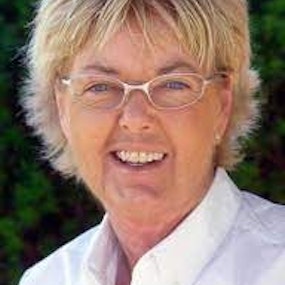
Bradley, Pat
Golf Professional
There has not been a more consistent performer or dedicated individual in Ladies Professional Golf Association history than Pat Bradley. This is a woman who made it on course management, patience and dogged determination, who experienced the highest of highs and the lowest of lows, and then came back to become the 12th woman enshrined in the LPGA Hall of Fame. “Commitment was the key,” Bradley said. “You can have success, failure, setback and defeat, and rise above it.”
During her prime, Bradley competed in 627 tournaments, posting 312 top-10 finishes, with 208 of those in the top five. She became the first woman golfer to surpass the $2 million (1986), $3 million (1990) and $4 million (1991) marks in career earnings and was the first woman to win all four of the modern Major Championships. In 1986, she won the Nabisco Dinah Shore, the LPGA Championship, the du Maurier and finished fifth at the U.S. Women’s Open, three strokes out of the Jane Geddes-Sally Little playoff.
That was the year that defined Bradley’s career. “I have been a very consistent and very good player, but I really believe that in 1986 I was tapped to be a little bit more distinguished than the other players,” Bradley said. “I think somewhere, someone up above picked me to have a year that will go down in golfing history and will make me just a little more special than other people. I honestly wish everyone could experience what I did in that dream-come-true year. I was invincible.”
“You can have success, failure, setback and defeat, and rise above it.”
After every one of he…
Read More
New to FORE the Good of the Game?
Here are some great episodes to start with. Or, check out episodes by topic.















